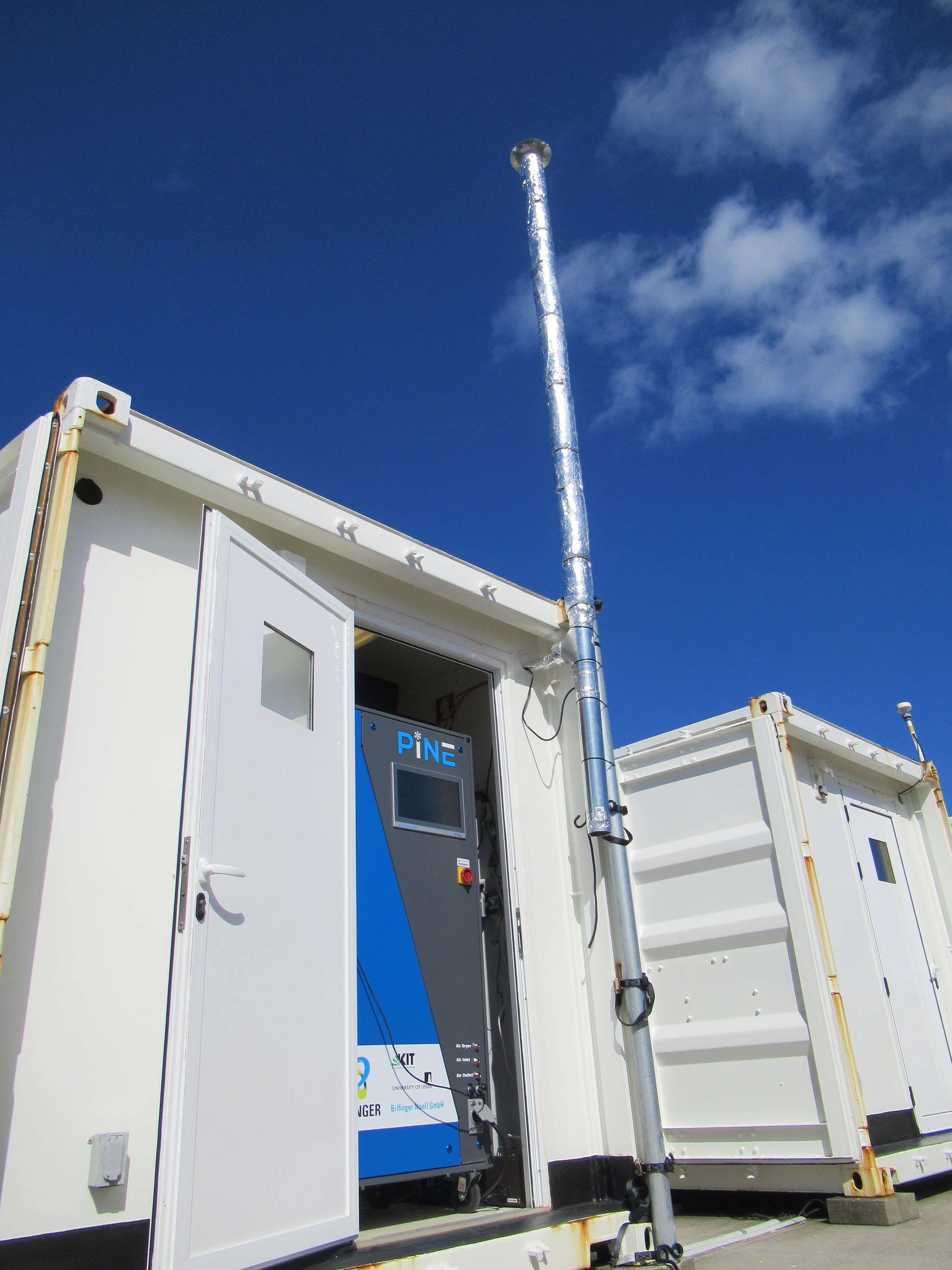Access New Ice-Nucleating Particle Data From Eastern North Atlantic Campaign
Published: 16 May 2022

Only a subset of atmospheric particles, known as ice-nucleating particles (INPs), can initiate ice formation in the atmosphere. An improved understanding of the characteristics of INPs and their role in ice cloud formation can reduce a source of uncertainty in climate projections.
To help improve the modeling of ice formation in the atmosphere, researchers collected measurements of INPs during a field campaign at the Atmospheric Radiation Measurement (ARM) user facility’s Eastern North Atlantic (ENA) atmospheric observatory. Data from this campaign are ready for use.
These data comprise ambient INP concentrations measured from October 1, 2020, to March 27, 2021, during the Examining the Ice-Nucleating Particles from the ENA (ExINP-ENA) campaign. Researchers collected these data to complement an ongoing closure study on ambient aerosol properties and measured INP concentrations. (Closure happens when measured and modeled values agree.)
During the ExINP-ENA campaign, the Portable Ice Nucleation Experiment (PINE) chamber, a novel cloud simulation system based on a simulated adiabatic expansion cooling principle, provided automated and continuous measurements of ambient INP concentrations in the range of minus 14 to minus 33 degrees Celsius. The 400-pound, temperature-controlled chamber ran remotely at the ENA to generate INP data about every 15 minutes on average.
Simultaneously, researchers collected aerosol particle samples on filters. They then characterized suspended particles to estimate INP concentrations with an offline droplet-cooling assay instrument, the West Texas Cryogenic Refrigerator Applied to Freezing Test (WT-CRAFT) system. WT-CRAFT’s temperature coverage is zero to minus 25 degrees Celsius. The WT-CRAFT estimates complement the PINE INP data above minus 25 degrees Celsius, but they have a coarser time resolution (about four days).
Scientists can use the PINE and WT-CRAFT data now. These high-resolution data—both with respect to time and temperature range—support the U.S. Department of Energy’s mission to improve the representation of ice formation processes in models. Modeling and parameterization results from the ENA campaign study will be reported separately.

PINE and WT-CRAFT data sets are available separately in ASCII/text format. For more details, please see the README files included with each data set.
INP data from different techniques may represent the ice nucleation efficiency of aerosols in different size ranges collected/measured over different sampling and measurement intervals. Please consult with the campaign’s principal investigator, Naruki Hiranuma, on how to use these INP data.
Access the ExINP-ENA data in the ARM Data Center. (Go here to create an account to download the data.)
To cite the PINE data, please use doi:10.5439/1845014. When citing the WT-CRAFT data, please use doi:10.5439/1845012.
Keep up with the Atmospheric Observer
Updates on ARM news, events, and opportunities delivered to your inbox
ARM User Profile
ARM welcomes users from all institutions and nations. A free ARM user account is needed to access ARM data.


















